atelier deshaus tucks its qintai art museum beneath an undulating, stepped topography
the underground qintai art museum
Located along the shores of Wuhan‘s Moon Lake, Qintai Art Museum is designed by Atelier Deshaus as a continuation of the landscape. The architecture aims to visual impact of the built space on the natural surface of the lake, and thus takes the form of a natural hill, sinking part of the exhibition spaces underground. With this strategy, the design team makes use of the underground space to minimize the presence of the museum as a mass, its expressive rooftop creating a new landscape. Meanwhile, on the road-facing side away from the lake, the museum is expressed with a vertical facade, continuing the fabric of the urban context.
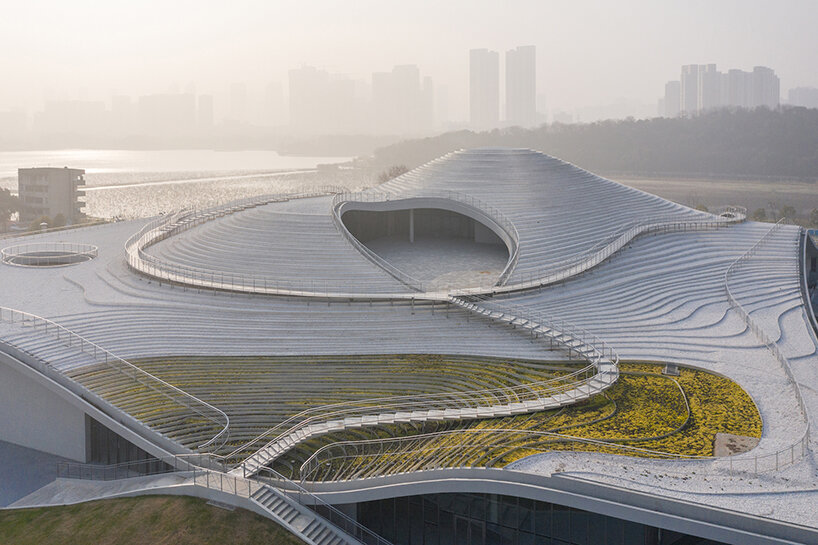 images © tian fangfang
images © tian fangfang
a new landscape by atelier deshaus
The undulating roof of the Qintai Art Museum by Atelier Deshaus (see more here) takes shape as an abstracted, stepping terrace following topographic contours. The risers of each step is finished with a silver metallic surface, while the treads are finished with white stone and covered in low vegetation. The stepping surface is cut by a network of walking paths, continuing the theme of the landscape as a new terrain to be explored.
These rooftop pathways are entirely open to the public, and extend beyond the boundaries of the architecture to connect with Moon Lake. This network links the natural surroundings with the occupiable roof, the exhibition spaces, the public education area, the art shop, and the café. Thus, they form a public space framework independent from the exhibition spaces of the museum. The activities of the public are part of the architectural surface.
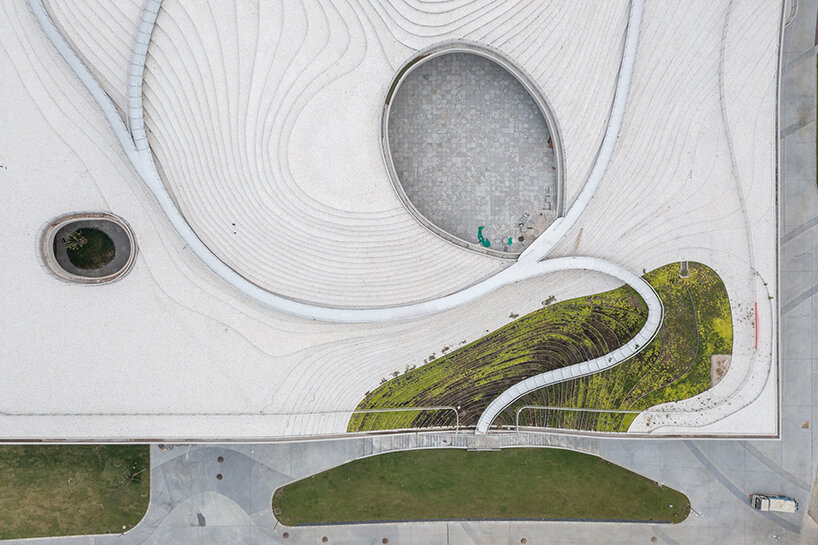
redefining the urban context
Atelier Deshaus’ Qintai Art Museum stands as an intervention, redefining the urban space on the south bank of Moon Lake. A plot of land to the west of the museum is reserved for an urban plaza, now under planning, which will soon create a public link with the Wuhan Library and Drama Center.
The main entrance to the museum, as well as the programs with strong public tenets including the Creative Cultural Spaces, are all placed on this side, where a subtly inwardly-curved façade together with the place creates a sense of enclosure. From the plaza there are ramped paths linking to the second-floor café and rooftop terrace, establishing a public circulation that could still operate after the museum closes. This serves to strengthen the museum’s openness and the urbanity of the architecture.
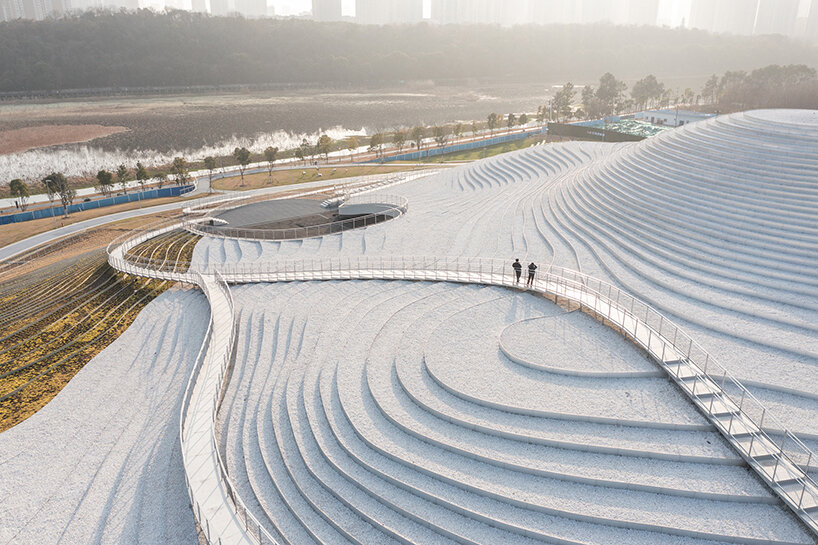
the network of walking paths blend into the shores of Moon Lake
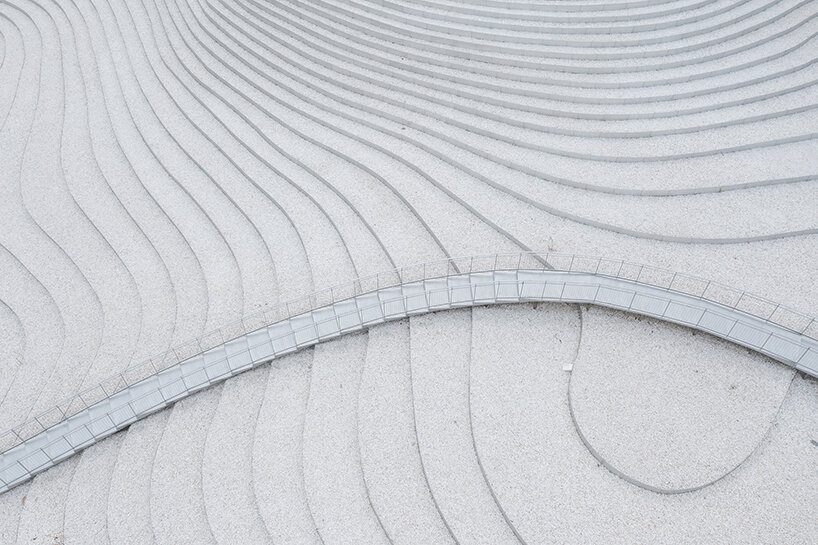
the stepping ‘hill’ is an harmonious continuation of the landscape
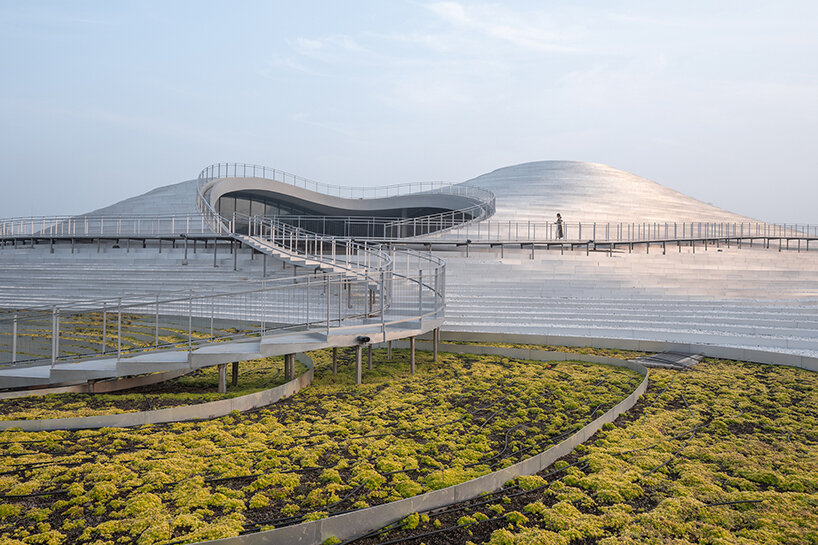 the public is invited to explore the new roofscape
the public is invited to explore the new roofscape


